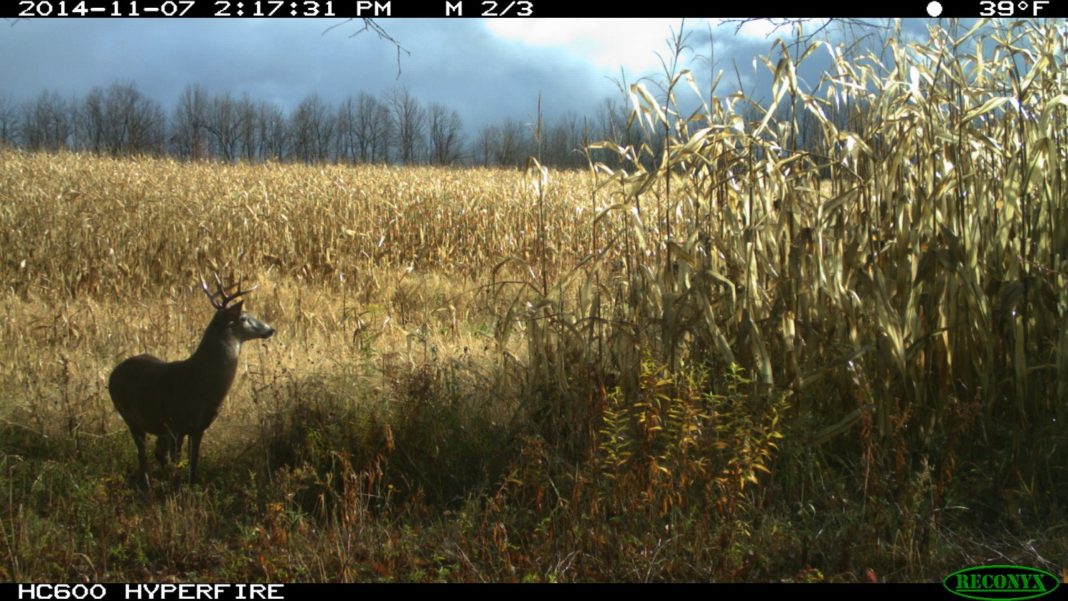Whitetail deer love cover, water, and crops and a standing cornfield provides two of these three necessities. Corn is one of the most prevalent of American crops and farmers and ranchers plant it from coast to coast. Whitetails have learned that this preferred food source is also an ideal bedding habitat and throughout the summer and early fall many literally live in the corn, only leaving to find water. Mark Keyser explains in this Scout video the key areas of a cornfield where deer are most likely to travel and congregate including the exterior edges and those on the inside. I once interviewed a Mid-Western farmer who took a Pope & Young whitetail every year from his cornfield and I asked him how he scored so consistently. After pausing for a few moments, he revealed a secret he seemed very reluctant to tell. “When I plant the field I turn the planter off in the middle of the field which prides a secluded patch of weeds and grass for deer to bed.” Year after year, he sneaked into that small sanctuary and found a bedded buck. Sneaking close to a buck in a cornfield may seem like stalking over cornflakes, yet as Keyser explains, if you move when the wind blows the sound of moving corn can cover your approach or in wet weather when stalks are damp and silent, stalking close to bedded or feeding deer is definitely possible. Since water is key to deer survival, hunting a pond or other internal water source can be productive as can exit routes to small streams and creeks. Scout to locate these trails and you are nearly guaranteed that deer will move within range of your stand in dry weather. As the corn harvest approaches don’t hesitate to talk with the landowner about where he’s seeing deer. It’s part of the good will process and he’ll no doubt like the fact that you are helping keep deer numbers in check. https://www.scoutlookweather.com/hunting/scoutdoors/posts/5859/standing-crop-whitetails-slam-dunk-hunt-strategies









![The Best Deer Camp Chili [VIDEO] Deer Chili Ingredients, Tomatoes, Chili Spices](/wp-content/uploads/2015/10/Deer-Chili-Deer-Camp-Recipe-218x150.jpg)








![How to Call Elk Early in the Season [VIDEO]](/wp-content/uploads/2016/08/byers003-218x150.jpg)




![Idiots Disturb Hunter: How Would You Have Handled It? [VIDEO]](/wp-content/uploads/2015/10/DSC00110-e1474487693878-100x70.jpg)
![Albino Buck Shocked to Shed His Antlers [VIDEO]](/wp-content/uploads/2015/10/AlbinoDeer-100x70.jpg)